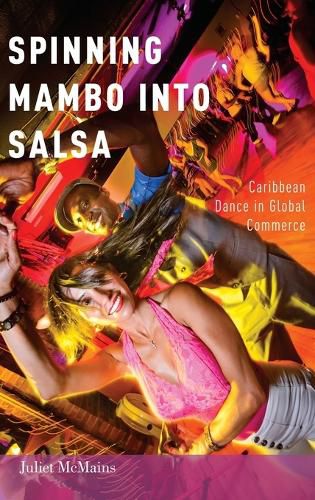Readings Newsletter
Become a Readings Member to make your shopping experience even easier.
Sign in or sign up for free!
You’re not far away from qualifying for FREE standard shipping within Australia
You’ve qualified for FREE standard shipping within Australia
The cart is loading…






Arguably the world’s most popular partnered social dance form, salsa’s significance extends well beyond the Latino communities which gave birth to it. The growing international and cross-cultural appeal of this Latin dance form, which celebrates its mixed origins in the Caribbean and in Spanish Harlem, offers a rich site for examining issues of cultural hybridity and commodification in the context of global migration. Salsa consists of countless dance dialects enjoyed by varied communities in different locales. In short, there is not one dance called salsa, but many. Spinning Mambo into Salsa, a history of salsa dance, focuses on its evolution in three major hubs for international commercial export-New York, Los Angeles, and Miami. The book examines how commercialized salsa dance in the 1990s departed from earlier practices of Latin dance, especially 1950s mambo. Topics covered include generational differences between Palladium Era mambo and modern salsa; mid-century antecedents to modern salsa in Cuba and Puerto Rico; tension between salsa as commercial vs. cultural practice; regional differences in New York, Los Angeles, and Miami; the role of the Web in salsa commerce; and adaptations of social Latin dance for stage performance. Throughout the book, salsa dance history is linked to histories of salsa music, exposing how increased separation of the dance from its musical inspiration has precipitated major shifts in Latin dance practice. As a whole, the book dispels the belief that one version is more authentic than another by showing how competing styles came into existence and contention. Based on over 100 oral history interviews, archival research, ethnographic participant observation, and analysis of Web content and commerce, the book is rich with quotes from practitioners and detailed movement description.
$9.00 standard shipping within Australia
FREE standard shipping within Australia for orders over $100.00
Express & International shipping calculated at checkout
Arguably the world’s most popular partnered social dance form, salsa’s significance extends well beyond the Latino communities which gave birth to it. The growing international and cross-cultural appeal of this Latin dance form, which celebrates its mixed origins in the Caribbean and in Spanish Harlem, offers a rich site for examining issues of cultural hybridity and commodification in the context of global migration. Salsa consists of countless dance dialects enjoyed by varied communities in different locales. In short, there is not one dance called salsa, but many. Spinning Mambo into Salsa, a history of salsa dance, focuses on its evolution in three major hubs for international commercial export-New York, Los Angeles, and Miami. The book examines how commercialized salsa dance in the 1990s departed from earlier practices of Latin dance, especially 1950s mambo. Topics covered include generational differences between Palladium Era mambo and modern salsa; mid-century antecedents to modern salsa in Cuba and Puerto Rico; tension between salsa as commercial vs. cultural practice; regional differences in New York, Los Angeles, and Miami; the role of the Web in salsa commerce; and adaptations of social Latin dance for stage performance. Throughout the book, salsa dance history is linked to histories of salsa music, exposing how increased separation of the dance from its musical inspiration has precipitated major shifts in Latin dance practice. As a whole, the book dispels the belief that one version is more authentic than another by showing how competing styles came into existence and contention. Based on over 100 oral history interviews, archival research, ethnographic participant observation, and analysis of Web content and commerce, the book is rich with quotes from practitioners and detailed movement description.